If you are frustrated that your students will try a math problem once or twice and then give up, this blog post is for you. Let me (re)introduce you to one of my favorite tools for helping students persevere when problem solving: the Open Middle Worksheet.
To explain why many educators find it invaluable, I’ll need to tangent and briefly explain a central theme of one of my favorite books, Freakonomics. Life is all about incentives. There are positive incentives (I go to the gym because I want to stay healthy) and negative incentives (I don’t steal because I don’t want to go to jail). Without these incentives (or if the incentives changed) what you do would change.
So, what are students’ incentives in mathematics? Unfortunately, American math students are too often rewarded for completing math problems as quickly as possible using as little energy as possible. Accordingly, with those incentives it makes sense to quit trying if students think they can’t solve a problem. This is no good because it takes a fixed mindset approach and does not encourage students to learn and persevere. In contrast, in English the incentives are set up to reward a cycle of gradual improvement through rough drafts that lead to final drafts. Why can’t we have something like that in math?
This is where the Open Middle Worksheet (shown below) comes in handy. The front side has a space for the student’s name as well as their first, second, and third attempts. The back side has spaces for their fourth, fifth, and sixth attempts. Each attempt has three components:
- a space for students to solve the problem
- a space for students to explain what they learned from that attempt and how they will use that knowledge on their next attempt
- a place to record the score they earned for their attempt and explanation
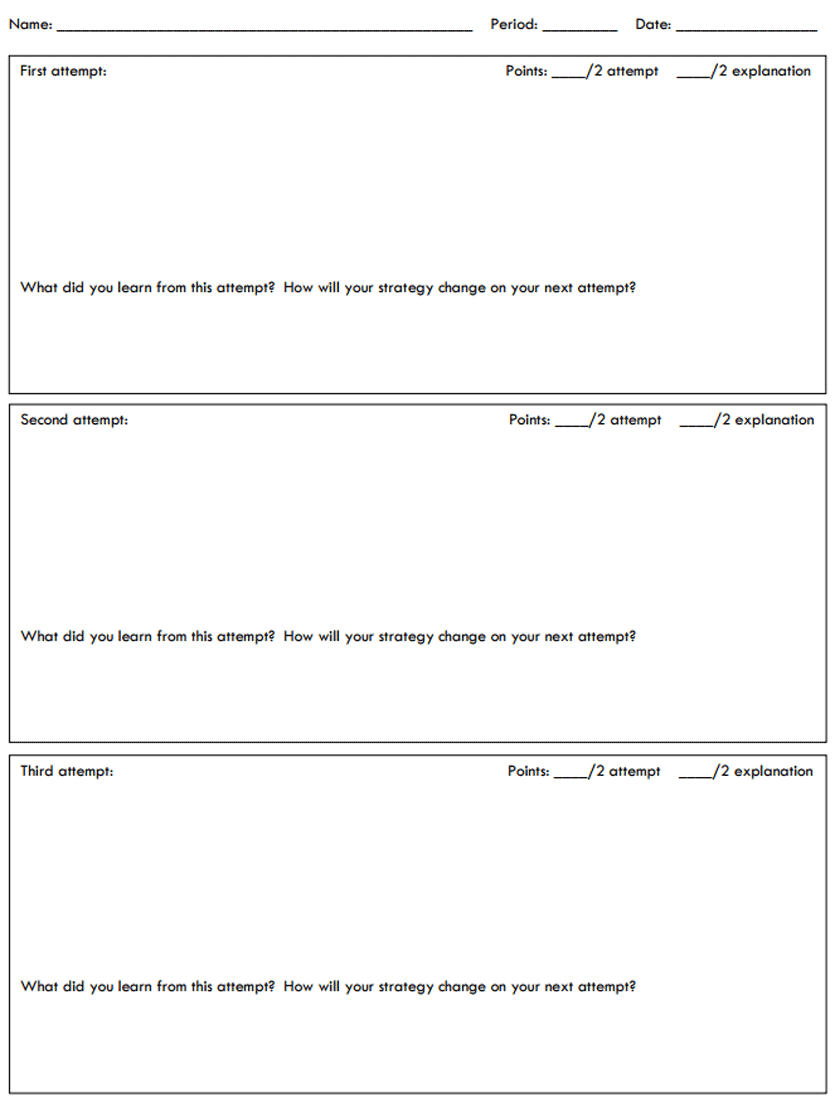
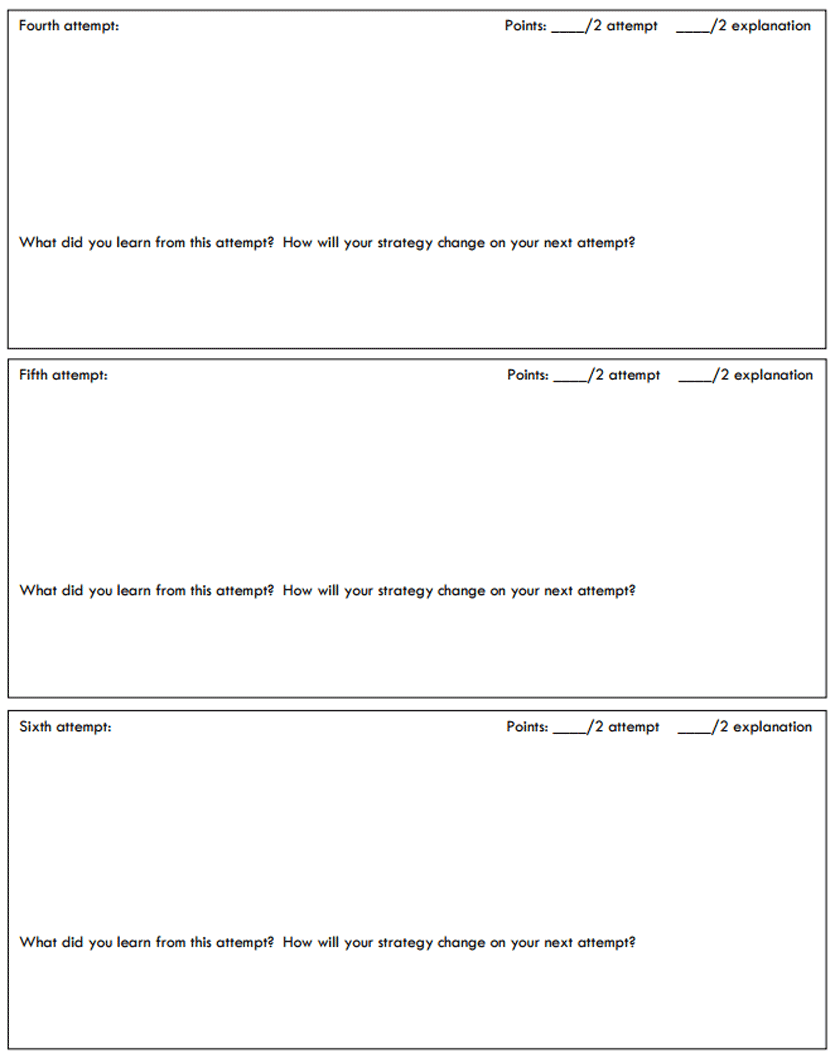
The worksheet is designed to set students’ expectations such that problems may take six (or more) attempts to complete. When I use this worksheet with students, I tell them, “I really hope you don’t get the problem right on the first attempt. If you do, then you’ll only be able to earn a maximum of four points: two for the attempt and two points for the explanation. I really hope it takes you at least three attempts so you can earn more points.”
Think about how the incentives have changed by introducing this structure! Instead of rewarding students who complete the problem as quickly as possible using as little energy as possible, now students are rewarded for a cycle of attempting problems, reflecting on what they learned from their mistakes, and improving their strategy.
This has worked wonders for me and has led to my absolute favorite piece of student work ever (shown below). This is from an 8th grade student who solved this problem:
What is the greatest area you can make with a rectangle that has a perimeter of 24 units?
On her first attempt, she struggled so much that she couldn’t even construct a rectangle with the correct perimeter. Prior to using this worksheet, that would have been both the beginning and end for a student working on this problem. Thankfully this student wanted to earn more points so she continued on. On the second attempt she was able to construct a rectangle with the correct perimeter and by the third attempt she was experimenting with greater side length values.
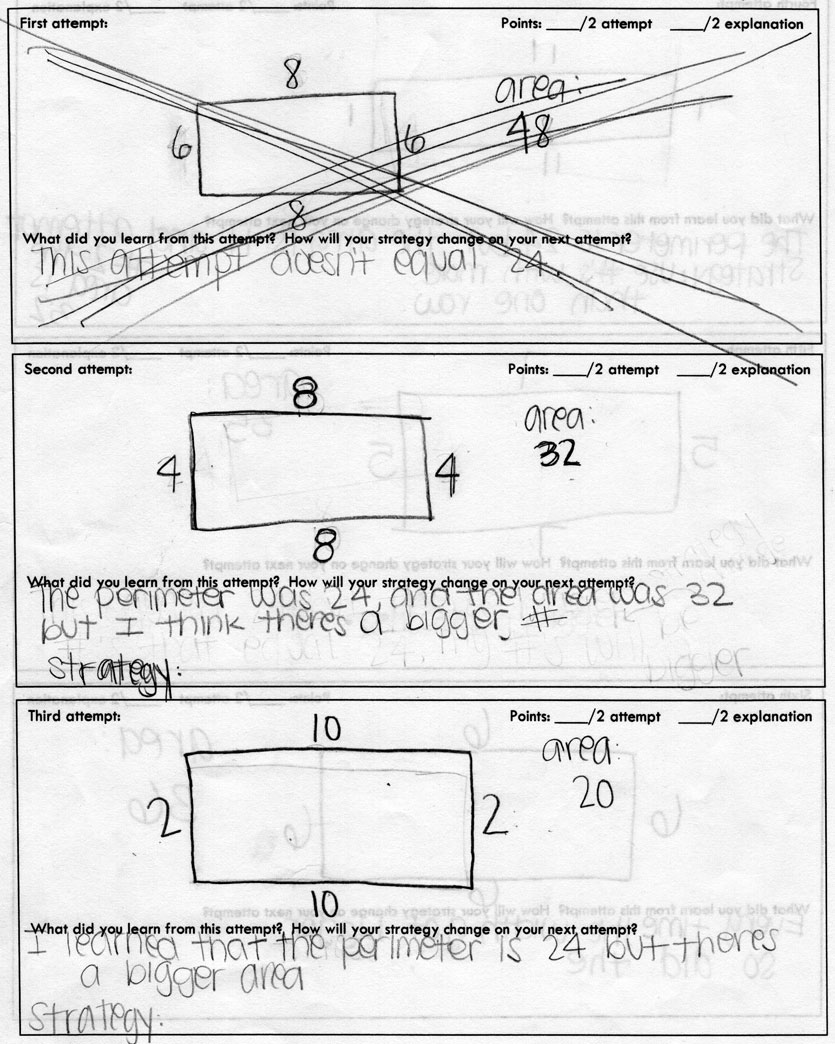
By the fourth attempt, it became apparent to me that while students had procedural understanding of area, they had gaps in their conceptual understanding. They could not visualize what 1 row of 11 square units looked like versus 2 rows of ten square units. So, we came together and had a conversation about it. With this understanding established, she realized she would give up an extra column to have another row and finally arrived at the answer by her sixth attempt. SIXTH ATTEMPT!!
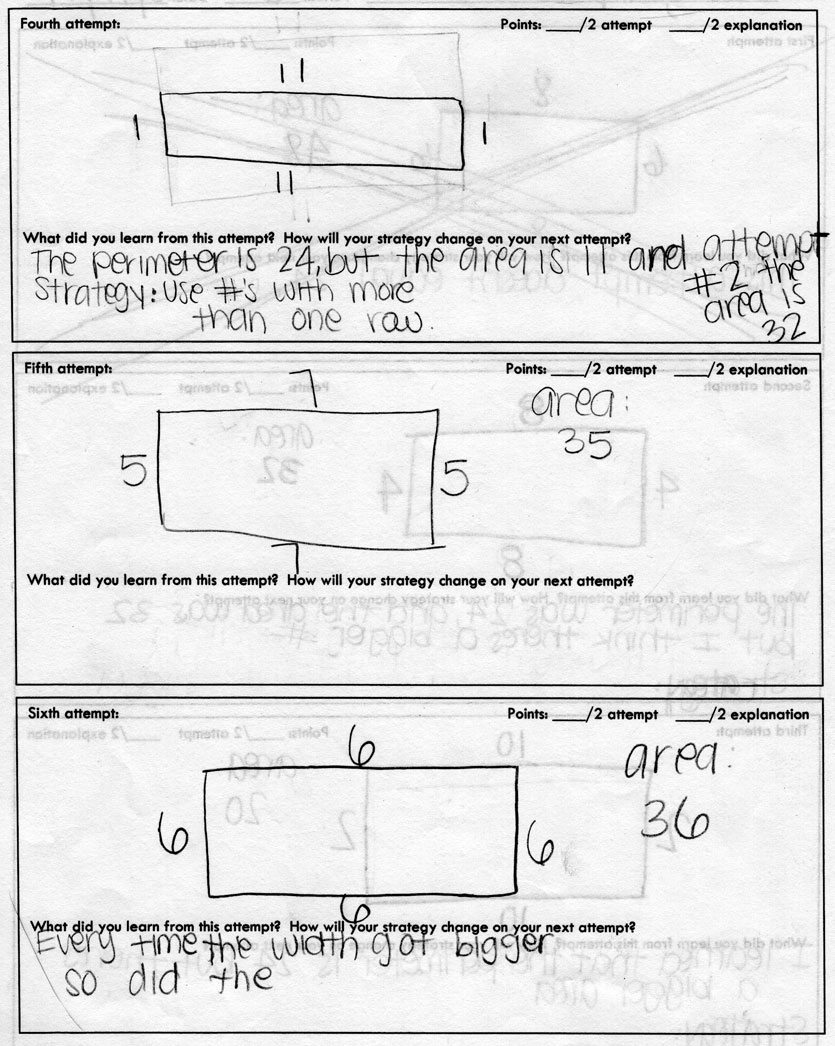
I ended that class by having students reflect on the progress they made over their attempts. I remember this student beaming with pride as she realized that something she might have given up on previously was actually something she could figure out. Don’t we want this for all of our students?
If you’d like to download this worksheet, it comes in two versions:
- Regular (ideal for printing and giving to students)
- Large (ideal for writing on while projecting from a document camera)
This worksheet works best for a single challenging problem that will likely require multiple attempts such as the higher depth of knowledge ones found at Open Middle. It is not intended to be used for multiple problems that each require few attempts (for example answering a different problem in each of the six attempts).
Do you have any Open Middle Worksheet success stories? Do you have suggestions for how to make the worksheet even stronger? Please let me know in the comments.

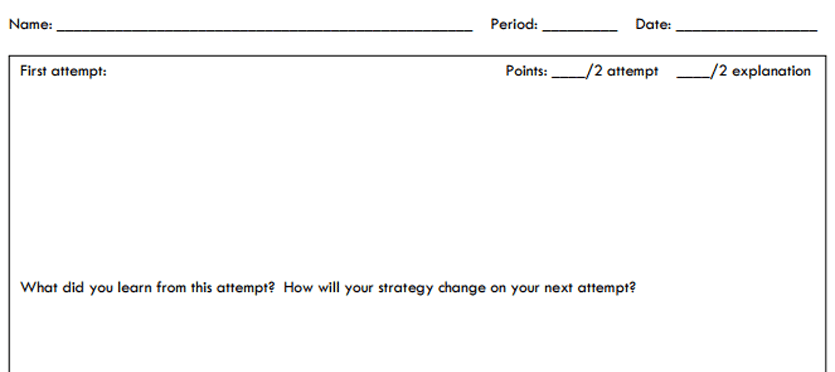
Thank you for this lesson/tactic. I have been noticing many of my students trying once, maybe twice and then telling me, “I don’t get it”. And, then they shut down. I look forward to trying this in my 5th grade class room. Thanks!
Great Pat. I’m really glad you see its value too.
This is Golden! I teach gifted and talented kids. This sheet allows me to differentiate for my students in a meaninful way for every student involved. I can challenge my more advanced students to show their work, using different strategies. I can encourage my struggling students with the support the sheet provides.
Win Win.
Thanks so much!
Lisa Morgan
I’m so glad you find this valuable Lisa. I’ve found it to be very valuable as well.
I am so glad you published this. I immediately changed my opening day activity by eliminating several of the questions and focused only on the richest question. Then I used your template to emphasize the “Attempts” and “Explanation”. The new version of the activity now teaches the students that I value their perseverance over their their arrival at an answer!
What a wonderful change for your students! Congratulations on emphasizing their growth.
Thank you for sharing this. I definitely want to encourage perseverance in my students! I was wondering how you use the “points.” Do you give students a grade for this work? Do you anticipate any negative consequence to me removing the points portion? I am trying to move towards a “grade-less classroom.” Thank you again!
So, truthfully, I virtually never actually grade these. Once students start to realize that they can figure out a problem with enough perseverance and that making multiple attempts is a normal part of the process, we stop using it. So, see this more as a temporary scaffold.
Hi where can I get the Spanish Version of this form?
Great question. Head over here: https://www.openmiddle.com/. On the right side is a section called “OPEN MIDDLE WORKSHEET”. You can find them all there.
Hello!
I am trying an open middle problme for the 1st time in my 8th grade algebra class. (This is my first year teaching too!) Do you have any suggestions for studnts who say they want to get it in 1 try and then complain that they will “earn less points” than someone who took 5 or 6 tries?
Thanks so much!
The reality is that they’re probably NOT going to get it right on their first try. Let them try to do it. I can’t even get the right answer on the first try on almost every problem.